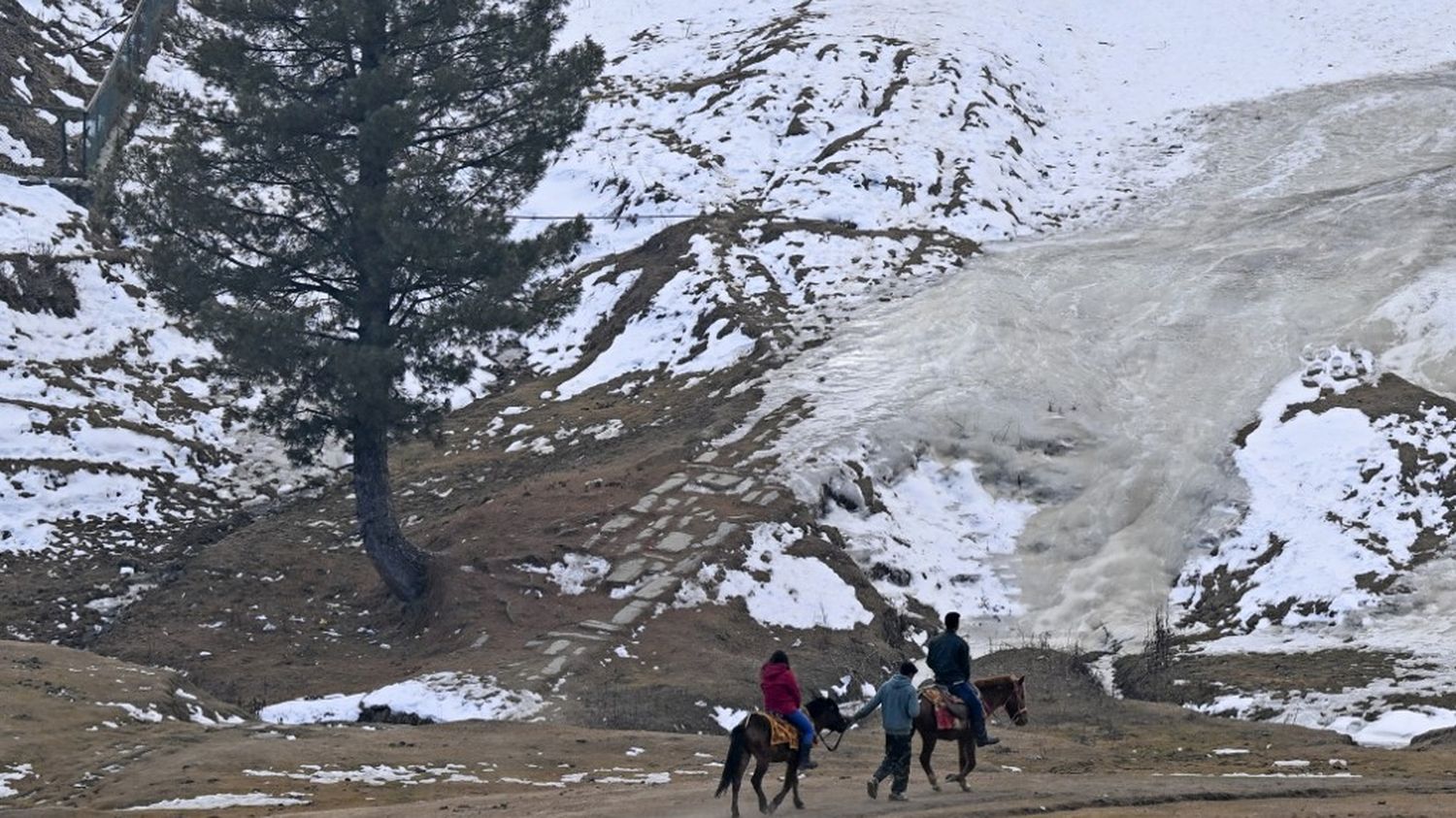It has hardly rained or snowed in the Himalayas since this fall. It is a region which concerns 1.9 billion people which is affected. Not only is agriculture impacted, but the future of rivers is compromised by endangered ice melt.
Published
Update
Reading time: 2 min

Gulmarg is one of the highest and most spectacular areas in the world. It takes skiers up to nearly 4,000 meters above sea level. However – a scene hardly believable in this area of Indian Kashmir – these foothills of the Himalayas which should have been completely white remained desperately brown and dry in December and January.
The resort’s recently built ice rink has been transformed into a paddling pool. The ski lifts were closed, the hotels remained empty with idle staff… Never seen before in 20 years. Of course, it finally snowed on January 31 and for two days hope has been reborn, but that will probably not be enough to catch up with the season.
“I want to cry every day.”, laments to AFP Mubashir Khan, organizer of “adventure” trips. 70% of its reservations were canceled. His business is on the verge of bankruptcy and he has even had to put his wedding plans on hold.
Agriculture impacted
The region is in fact the victim of an exceptional drought. Since autumn, there has been no rain, no snow, and temperatures are on average six degrees warmer than normal.
The lack of water could also have a disastrous impact on agriculture, the economic pillar of the region. Due to global warming, farmers have already abandoned rice to plant fruit trees, which consume less water. They are now powerless,no developments have been announced to them for February, while the apple trees, pear trees and other apricot trees are already in flower, more than… two months in advance.
If the glaciers do not manage to replenish themselves this winter, there will be no snowmelt and no water in the rivers this summer to water the orchards. The Himalayas are already weakened by the early and continued melting of their glaciers, but “the period of drought current is an extreme weather event”one of those phenomena which “expected to become more intense and more frequent in the future”says climatologist Shakil Romshoo of the Kashmir Islamic University of Science and Technology.
“The third pole”
This situation concerns an enormous population area: we are talking about the “great Himalayas”, which includes the Hindu Kush and Karakoram massifs. Basically, an area that extends to northern India but also to Pakistan, Afghanistan and China. This region is also called “the third pole”, because its ice fields shelter the largest reserve of fresh water in the world outside the polar regions. It is the source of ten different river systems that provide irrigation, electricity and drinking water to more than 1.9 billion people.
Almost a quarter of the world’s population will therefore feel the full force of the consequences of climate change within a few months. In Kashmir, the authorities have already alerted residents to the serious disruptions that await them: risks of water shortages and large forest fires.
In early January, the World Meteorological Organization announced that 2023 had been “from afar” the hottest year on record. The average annual global temperature was 1.45°C above pre-industrial levels (between 1850 and 1900), and there is no evidence that the trend is downward.
